On Thanksgiving eve 2019, Netflix released a new 4-episode documentary series called Broken. One of those episodes, the third, is called “Deadly Dressers”. It’s a topic I am intimately familiar with, because I lost my 3-year old daughter Meghan 15 years ago this December 18th to a dresser tip-over. You can learn more about her story here: www.meghanshope.org
Since her death, I have been a vocal advocate for tip-over education and prevention. I am also quite familiar with the content of this episode, because I, along with my fellow members of Parents Against Tip-Overs, are a part of this documentary.
After watching the much anticipated final product, more than a year after we were filmed and interviewed for it, and taking some time to process it and formulate my thoughts, I want to share with you what the documentary did, and more importantly, did not, effectively bring to the attention of the viewer with regard to furniture tip-over incidence and prevention.
The birth of Broken and the role of Parents Against Tip-Overs
In the late spring of 2018, Parents Against Tip-Overs (PAT) was born, formed by a group of parents who had all lost a child to a furniture and/or TV tip-over. Each of us had been advocating on our own, some with our own organizations dedicated to tip-over prevention and awareness, and some of us, like myself, for more than a decade. We had found each other thanks to the internet and social media, and after talking to each other, and expressing the same frustrations that our independent organizations were finding it difficult to make a nationwide impact, we decided to form a nationwide coalition. If we were all trying to do the same thing in our own geographic area, would our voices be that much louder and more powerful if we joined forces? Could we get our message to a national level if we worked together? The answer, based on what we’ve accomplished in the last year, is a resounding, yes!
As we formed our mission and goals for the coming year, we formed partnerships with two other nationally experienced advocacy groups, Kids in Danger and Consumer Reports. They shared their knowledge and experience with us, and helped us organize a trip to Washington, D.C. where we all met each other for the first time, met with all five CPSC commissioners, and attended the ASTM Furniture Safety Sub-Committee bi-annual meeting. During the planning for this, Netflix reached out to one of our members and expressed interest in following us and filming us for a documentary they were working on, and they did just that.
We were, of course, not allowed to discuss it publicly until about 2 weeks before Thanksgiving, when the series and trailer was announced.
Why do dressers tip-over and are they really deadly?
Overall, this episode was very well done. It was captivating, educational, and engaged the viewer for the entire hour. It begins by introducing you to PAT mom Janet McGee, who lost her son Ted when his IKEA MALM dresser fell on him and killed him during his nap time on Valentine’s day 2016. It then takes you on a journey to understand how furniture used to be made and how that has evolved to the lighter, do-it-yourself assembly type of furniture that costs less to produce because manufacturing moved to China, and lasts only a few years, versus furniture being designed to last a lifetime like it used to be.
The furniture of today also largely uses lightweight materials for the backing of furniture, making it inherently top and front heavy and thus inherently more unstable than a dresser that has a solid wood back. Consumers loved furniture that was cheap and allowed for change every few years. It’s how IKEA was born and thrives.
The documentary did briefly cover how furniture tip-overs happen, basically explaining what so many people fail to understand about tip-overs. It’s not a parenting or supervision problem. It’s about lever arms (open drawers) and torque (kids interacting with dressers, which changes the dresser’s center of gravity, causing them to tip). It’s about physics, plain and simple.
The answer to whether or not dressers are deadly? The answer is yes!
Since 2000, we know of at least 542 fatalities related to falling furniture, and there have been reports of hundreds of thousands of injuries, most of these to children under 5, though older children and even adults are not immune. The current statistics are that a tip-over happens about every 17 minutes. About every half hour a child is seen in an ER for injuries related to a tip-over, and about every 11 days a child dies. (numbers from the 2018 CPSC Tip-Over Report)
It’s important to understand that you cannot tell by looking at a dresser, or any piece of furniture for that matter, whether or not it poses a tip-over risk. It doesn’t matter how heavy or light it is (it took 2 adults to move Meghan’s dresser). It doesn’t matter who made it or where you bought it. It doesn’t matter if it was cheap or expensive. If it’s not anchored to the wall it can tip and it can seriously injure or kill a child. Period.
Is it about Deadly Dressers or just one kind of deadly dresser?
That said, this episode of Broken was really about IKEA and aimed at exposing their deceptive history, marketing, illegal sourcing of wood, and resistance to fixing the tip-over problem they knew existed. A problem that they knew had killed children. It exposed their resistance to recalling their MALM dresser, even after it was known to have killed several children, even after multiple lawsuits, and even after much negative press, they still refused to recall the MALM.
Two of those parents whose children were killed by a MALM dresser are founding members of Parents Against Tip-Overs. One of them, Janet McGee, was featured prominently in the documentary. She was incredibly articulate in speaking about the issues with IKEA, their unstable furniture, and their refusal to do the right thing (making their furniture stable and adherent to the current voluntary furniture safety standard to being with and recalling it immediately when the first death was reported) directly resulting in her son’s completely preventable death. She also made it clear that the goal of Parents Against Tip-Overs is to work with all manufacturers to make safer furniture, trying to make the point that it’s not just IKEA that is the problem and their goal was to hold IKEA accountable.
IKEA absolutely needs to be called out for their deception and resistance to recalling the MALM, and their failure to market the recall the same way they market their other products, burying the recall notice on their Website, taking weeks and months to respond to requests for the repair or pick up and reimbursement option of the recall, and resisting requests from PAT members to meet and discuss ways to make the recall more effective. They have the proverbial blood of these dead and who knows how many injured children on their hands and did nothing they were not required to do as a result of those lawsuit settlements.
It was not until the media and advocacy groups turned up the pressure, mounted lawsuits, and publicly called them out again and again with negative press, and the CPSC finally took legal action against them to encourage and eventually force a recall, along with the deaths of even more children while they actively resisted a recall, that they finally even agreed to recalling the MALM. The fact that it took more than one death, let alone all the media pressure and the fact they utilized every loophole to their advantage is irresponsible and completely unacceptable. This is something the public knew nothing about until now.
IKEA, and all manufacturers, have a moral and ethical obligation to make a safe product, and as soon as they get a report of a serious injury or death, they should be pro-active in addressing it by alerting the public, not burying their heads in the sand and throwing money at it, as if that will fix the problem or bring any solace to those parents who had to bury their children because of IKEA’s greed. This episode did a fabulous job at conveying those points.
It was not mentioned or made clear in the documentary, that other IKEA furniture has killed children including the HEMNES dresser, a wardrobe, and RAAKE dresser so far that we are aware of.
It’s not just IKEA!
What was not made clear, was the fact that more than half of the members of PAT’s children were NOT killed by IKEA dressers, but by dressers made by other manufacturers. This is true of the general statistics as well. Furniture that was made by manufacturers who do not all make ready to assemble furniture. Manufacturers that make juvenile furniture and furniture that was sold and marketed as nursery furniture.
Parents assume if a product is sold in the United States, especially if it is marketed for children, is safe. That is simply not true. Just look at how many products are recalled every week! You can find them at www.cpsc.gov/recalls
This is concerning and disappointing, for it is not just IKEA or ready to assemble furniture that is falling on and injuring and killing kids, yet for many in this country, that’s what they take away from all the media coverage about IKEA tip-overs. Including this documentary.
Exposing the role and limitations of the CPSC
The documentary also brought to light some of the problems with the Consumer Product Safety Commission (CPSC) and their role in protecting the consumer when the agency becomes aware of unsafe, dangerous, and downright deadly products.
Former Chair Marietta Robinson was fantastic and pointed out several problems that I wholeheartedly agree with. The CPSC is an agency hardly anyone knows about, but everyone relies on because their mission is to protect the consumer from “unreasonably dangerous products” and to issue recalls.
The Commission, at least some of its members, act in the interest of industry far more often than they do in the interest of the consumer. Sadly, this often happens along political party lines, which is also completely unacceptable for a Federal Agency tasked with keeping the citizens of the U.S. safe. They are the CONSUMER product safety commission, not the industry product protection commission! I also assure you, tip-over is not a partisan issue. Both Republican and Democratic children are equally victims of tip-overs. Furniture doesn’t discriminate who it falls on!
Thankfully, acting Chair Ann Marie Buerkle who was interviewed in the documentary, has resigned her position and is no longer at the CPSC. Commissioner Robert Adler, who is featured in the scenes with the members of PAT around the table, is now the acting Chair. The current makeup of the Commission is 2 Republican commissioners and 2 Democratic commissioners with one more to be named by the President soon, to fill the seat left vacant with acting Chair Buerkle resigned.
Section 6(b) – The gag order that delays or prevents recalls, and results in preventable injuries and deaths!
Another little known, but incredibly important restriction on the CPSC was also part of this episode, although it was only briefly touched upon. It’s called section 6(b) of the Consumer Product Safety Act (CPSA). It basically says that the Commission cannot disclose a product hazard or issue a recall without the agreement of the manufacturer! This allows the manufacturer to dictate the terms of any public notice of known injuries or deaths, or to refuse to have any public disclosure at all! If the Commission feels strongly, that they need to go above the head of the industry, they must sue the manufacturer, which takes years and requires funding the Commission just doesn’t have in their budget. This is what happened with IKEA and the dresser recall, and had IKEA agreed to and issued the recall when they learned of the first death, instead of their “repair” program, Ted McGee, Camden Ellis, and the other children who have died from the MALM dresser, might be alive today!
This is the same reason the Fisher Price Rock and Play and other inclined sleepers were not recalled until Consumer Reports wrote a scathing article citing twice as many deaths as the CPSC reported (but both they and Fisher Price knew about) and a media storm ensued, resulting in tons of negative press and demands by consumer groups and the American Academy of Pediatrics to issue an immediate recall. Only then, did Fisher Price agree to a recall!
This needs to stop! Manufacturers need to be held accountable and do the right thing to keep consumers safe. If they won’t do it on their own, the CPSC needs the authority to force a recall without their consent and notify the public of potential or actual hazards that can result in injury or death. No exceptions.
Unfortunately, only Congress can repeal 6(b), and only a massive public outcry will make that happen. We need your help with that! We need you to write or call your Congressional representatives and senators and tell them you want to see section 6(b) of the Consumer Product Safety Act repealed!
The CPSC has the power to issue a mandatory standard, but is dragging their feet
The CPSC also has the power, right now, to issue a mandatory furniture safety standard. They have been divided on doing so and the Republican members of the commission voted against using their power to do so under another rulemaking part of the Consumer Product Safety Act. Instead, the three that voted against it, want to allow the voluntary process to do its work while they wait for more “data”. In March of this year, all 5 commissioners agreed to work toward a mandatory standard. They have begun their own testing, but this process is likely to take years. The furniture industry is more than happy to bide their time and wait so they can continue to avoid making changes that would make furniture safer now.
What’s this voluntary standard?
The voluntary standard process basically allows the industry to make dressers however they want, safe and stable or not, because the voluntary standard is basically a suggestion. Because it’s not required that manufacturers follow it, many do not.
The voluntary standard the ASTM sub-committee on furniture safety is tasked with creating (largely comprised of furniture manufacturers) has existed for nearly 20 years! If they can’t create an effective voluntary standard in 20 years, they likely never will unless they are forced to. Why? Because the industry doesn’t want it. They whine that if the “good actors” comply with the standard, or make it even stronger, the ones who don’t follow the voluntary standard at all will get a bigger market share which translates into lower profits. Basically, they are putting profits over the health and safety of children. They will tell you they aren’t, but the stalling, stonewalling, circular arguments and constantly saying they don’t have enough data will tell you the truth.
That said, there are some manufacturers that do comply with the voluntary standard and some that even go beyond it and test furniture for stability with a higher test weight. Very recently, with the media coverage from Consumer Reports, and media featuring PAT parents over the past year, and ahead of the release of Broken, has found them suddenly much more invested in anchoring education and a desire to work with retailers, which while good, this could also be the industry’s way of diverting and avoiding having to make more stable furniture. It’s cheaper and easier that way.
The problems with the voluntary standard process, and the industry’s concerns versus ours, as well as the impact PAT has had by attending and participating in these standards meetings could very easily have been incorporated into this documentary, and we very much wanted it to be, but it was not.
How are dressers tested for safety?
The documentary did include a video and description of the current way dressers are tested for “safety”. The test is inadequate and downright misleading. Children don’t gently open only one drawer and gradually put up to 50 lbs of force on it. It’s not a real-world use test, nor is it good enough to protect kids from tip-over injuries and deaths. It also did not explain what the voluntary safety standard is and what it does and does not include. It currently only covers clothing storage units 27 inches tall and taller. Testing does not reflect real-world use, or account for the forces of a child interacting with a dresser, opening multiple drawers, pulling, pushing, or climbing on it, nor does it account for the effect of carpeting versus a hard floor, all of which impact stability and tip-over risk. It also only accounts for children up to age 5 in weight and we know older children and even adults have been injured and killed when a clothing storage unit of furniture has tipped on them. This is a huge issue and one we desperately wanted to be brought to the attention of the viewer and it was not.
The CPSC is engaging in their own testing, which we’ve asked for and given input into, and the industry is more than happy to wait for their data rather than aggressively move forward with their own testing to advance the stability and safety of furniture and create a stronger and more effective voluntary standard. The CPSC has issued a notice of proposed rulemaking (NPR). This was indicated at the very end of the episode and as it clearly said, it’s expected to take years.
We don’t have years. Its already been far too long. 542 fatalities from tip-over is more than enough data. The industry has had more than enough time to do the right thing and create a robust voluntary furniture safety standard. So has the CPSC. Frankly, they’ve both failed. Not only our kids, who died, but yours, too, because it could just as easily happen to you.
What we do have – The CPSC Anchor It! Campaign
In 2015, after 10 years of myself and other advocates trying to get the word out that furniture needs to be anchored to the wall to prevent tip-overs, the CPSC launched their Anchor It! Campaign. I, Lisa Seifert from Shane’s Foundation, and Keisha Bowles from Another Day, Another Chance, were part of that launch as community advocates for the campaign. A PSA featuring the 3 of us was called “Real Moms Urge You to Anchor It” and performed very well on social media, helping to reach parents and connect the issue of tip-over and the need to anchor by using our tragic personal stories.
That said, the consumer should not have to take the final step to make furniture safer and the industry should not consider this a reason to avoid making safer and more stable furniture. Manufacturers know right now how to design and construct furniture so that it is stable, but it will increase their production costs and so they resist. Until ALL manufacturers are required to do so, newer furniture, as well as the existing furniture in your home, must be anchored to the wall.
One other important thing that you need to realize is that furniture anchors and straps, including the ones sold with furniture, are not actually tested by a universal standard, if at all, to see if they are capable of holding a dresser/piece of furniture to the wall.
The anchors sold with dressers are only required to hold 50 pounds for a brief period of time when slowly and carefully hung from one end of the anchor. They are not tested when attached to the wall and the dresser and installation instructions, while included, are not always clear.
Most dressers weigh more than 50 lbs, especially once drawers are full, and when you add the weight of a child and forces created when drawers are open and pulled on or climbed in. It adds up to way more than 50 pounds! That said, anchoring your furniture is absolutely necessary and more than one anchor may be (and very likely will be) needed.
You can learn more about how and why to anchor your furniture at www.anchorit.gov.
Parents Against Tip-Overs: What you see versus what happened that week
The members of Parents Against Tip-Overs were followed for an entire day by the Netflix crew. They likely had about 6-8 hours of footage from that day just from us. Plus, they interviewed Janet McGee and Brett Horn at their homes shortly afterwards. You saw a very small fraction of what we discussed, advocated for, and the larger mission of PAT.
We met with all five CPSC Commissioners that day. They did not film every meeting, but we had hoped our purpose in meeting with all of them would be part of the episode. A fraction of what we discussed with Commissioner Adler was shown, but many of our talking points, all of them valid and important, did not make the final cut. They also interviewed a few of the commissioners one on one which you saw snippets of. That said, I do think they did a good job telling the story they were trying to tell.
We also all attended the ASTM Furniture Safety sub-committee meeting. It’s held twice a year, and most of us attend each meeting in person. If we can’t be there in person, we call in to participate via phone. This is the organization that is tasked with developing the voluntary furniture safety standard for clothing storage units only (dressers and other pieces of furniture that would be used to store furniture like wardrobes, chests of drawers, etc.) I’ve written about the issues and challenges with this process on the Meghan’s Hope Safety Blog previously.
We hoped that the process of developing a voluntary standard, and the industry’s resistance to creating an effective voluntary standard, would be included and highlighted, because it’s a huge part of why the statistics on tip-over injuries and deaths have not significantly decreased and a huge part of the mission of Parents Against Tip-Overs. It was not. The voluntary standard was briefly mentioned, but not how it is developed and how strongly the industry fights to prevent changes. It’s contentious, and the same circular arguments happen every meeting. At the end of the day, the manufacturers are afraid it will increase their costs, resulting in decreased profits, and that the manufacturers who don’t participate and comply with the voluntary standard will get all the business.
IKEA is an active part of this sub-committee with us. It would have been easy to include this information, even if they could not film the meeting, but they did not. It was alluded to, but the average viewer likely did not make that connection.
I believe the producers at least requested interviews with other industry members of the ASTM sub-committee. I do not know if those interviews were on camera, if they happened at all, and why they chose not to include this vitally important aspect of the fight to end furniture/dresser tip-over in this documentary.
PAT also had dinner that night and Netflix filmed much of it, talking to us individually or in small groups, and taking the wider, broader shots. Some of the more poignant moments were shown, and they were important and impactful, but so much more of what we are passionate about, discussed that night, and wanted them to help us bring to the attention of the viewer could have been included in this documentary.
What’s Broken about Broken’s Deadly Dressers Episode?
While I feel the Netflix documentary, Broken: Deadly Dressers was an incredibly well-made documentary, and it did bring to light some of the issues contributing to dresser tip-overs, it did not leave the average viewer with the “OMG, I had no idea this could happen, we have to secure our dressers right now” feeling I was hoping it would.
Instead, it was much, much too focused on IKEA, and far beyond the role the company has in furniture tip-over. I have heard more "I'll never shop at IKEA again" comments than I've heard "I need to anchor my dresser to the wall" comments, and that's deeply concerning and frustrating. If the viewer got the message furniture tip-over is a danger they need to address in their homes, the vast majority think it’s only cheap or IKEA furniture that’s a danger. That is very dangerous thinking. This is a perception that has grown among parents and the public with every new media story focused on IKEA dressers. I want to scream IT'S NOT JUST IKEA DRESSERS THAT KILL KIDS!
That comment is in no way meant to minimize the deaths of the children from IKEA dressers a wardrobes. It’s just that the public, and even the media, forms their opinion based on what they hear and see, and there is very little about the bigger issue of tip-over outside of IKEA’s MALM dressers in the media today. It's no wonder the public has the perception they do, which is why I wish there was less time spent on IKEA and more time spent on the other issues parents need to know about to keep their kids safe from ALL furniture in this documentary. I feel the media has a responsibility to expose all of the issues, especially when we are feeding them what they need to educate the public about.
I understand that the goal of the Broken docuseries was to highlight how deceit in product manufacturing and marketing can have significant and even deadly consequences, but a tremendous opportunity was missed and could have been incorporated, even with a heavier focus on IKEA as the example.
There were aspects of the documentary that could have been addressed in less time, allowing for the inclusion of the other aspects of tip-over prevention. For example, the entire segment on deforestation could have been much shorter and still have gotten the point across.
Points I wish they spent bit more time on:
- The fact that ALL furniture has the potential to tip over and injure children, not just IKEA or inexpensive ready to assemble furniture. This fact cannot be emphasized enough!
- Where the data for the statistics on tip-over come from and what the problems are with it. The crux of which is the fact we know, and the CPSC admits, that the data is only estimated and largely under-reported. My own survey results support this. I wrote an in depth blog on this topic here: The tip-over data dilemma
- The fact that you cannot tell by looking at a piece of furniture/dresser how safe or unsafe it is. It doesn’t matter how much it cost, who made it, where it’s sold, what it’s made from, how heavy or light it is, or what room of the house it’s in. If it’s not anchored properly to the wall, it can tip. This is a point that could have easily been made along side the IKEA focus, especially tying in the stories all the Parents Against Tip-Overs and what type of dresser fell on their child.
- What the current voluntary standard says, what type of furniture is included, and what type is not, who is responsible for creating that standard, and why it’s so difficult to make that standard effective. Exposing the furniture industry as a whole and their resistance to advancing that standard is an important part of our fight that was not clearly explained and the public needs to know that.
- Why we need a mandatory furniture safety standard NOW, which leads to the STURDY act, what it is, why we need it, and the fact we need the public’s help in getting it passed through the senate. This bill was preceded by three other bills related to furniture safety introduced to the U.S. House that lay the groundwork for it and was “in the works” at the time of filming. It could have been included if in no other way, then at the end in the same way they added the information about the CPSC voting to proceed with working toward the creation of a mandatory safety standard. Stay tuned, my next blog will be all about the STURDY Act and how you can help us get a strong, effective, mandatory and comprehensive furniture safety standard that all manufacturers need to comply with.
- They did not include vitally important information on how to report a tip-over or any other product hazard to Safer Products.gov which is one of the ways the CPSC gets the vitally important data on furniture tip-over
- The fact that the only way to ensure ALL furniture in your home doesn’t tip-over on your child is to anchor it to the wall with an appropriate anchor(s) according to manufacturer directions.
- The fact that furniture anchors (including the ones that come with furniture, even IKEA’s) are not actually tested when attached to the furniture to see if they’ll hold the weight of the furniture with a child climbing on it and can and have failed. Anchors are not all created equal. There are many counterfeit anchors on the market that are less expensive, not tested at all, and made with cheaper materials and even more likely to fail and consumers don't know the difference.
One of my biggest frustrations is the lack of the backstory on the groundwork laid by parent advocates long before the IKEA deaths were exposed in the media. Important steps that started this entire process in motion including bills in Congress asking for warning labels, anchors sold with furniture, and instructions came from a bill first introduced in 2005 and bearing my daughter’s name, grassroots letter writing (with pen and paper, before everyone had email!), media coverage that was only TV and print and before it could be shared electronically, and years and years of advocating for anchoring furniture, safety standards, and getting the messaging out there by word of mouth, long before social media existed, that there is no inherently safe furniture. The work of parent advocates before social media is what got this ball rolling and catalyzed the CPSC's now annual tip-over report, moved the voluntary standard process along to include warning labels, anchors, and to create a stability test in the first place.
Because this backstory was not explained, many comments we’ve received are to the tune of “Why wouldn’t you just use the anchor kit that was included and follow the directions?” "Why are you blaming the manufacturer for your failure to anchor your dresser?" They don’t understand that if it were not for parents like me/us, those anchors, warning labels and directions would not be included today! Our reality was very different because we didn't know and anchoring was not on anyone's radar 15 years ago. Although some manufacturers are trying to do the right thing and follow the voluntary standard, many do not.
Because the safety standard is still only voluntary, warning labels and anchors are not included with many pieces of furniture today! It also wasn’t clear (though it was alluded to) that IKEA’s Secure It campaign was only created so they could avoid a recall, not because they wanted to protect children out of a moral or ethical obligation. The general public think all the negative attention on IKEA is unjust because they tell people to anchor furniture. They completely missed the point they only started that program because they were forced to.
This has resulted in all of us receiving accusatory and inflammatory posts and parent blaming and shaming comments, who think we were blaming IKEA or the industry for our ignorance. They completely missed the fact that we did not know about this risk until our kids died, and we went public with our stories to expose the industry for their shady and resistant practices to protect THEIR kids. They know about it because of us. It could just have easily happened to their kids. They aren't special or better, they are just luckier than we were. We expected that we would receive these types of messages from trolls and parent shamers, in part because we’ve been receiving those comments for years, but an opportunity was missed by Netflix to help us share this important aspect of the tip-over back story and truly set the tone for the documentary.
That said the documentary did address the following:
- The multi-layered problems with IKEA’s resistance to acting in the best interest of its customers in favor of its pocketbook as well as exposing their unethical and irresponsible business practices
- What causes dressers to tip over
- The problems with the CPSC and how they contribute to children continuing to suffer injuries and deaths from tip-overs
- It brought a human and emotional aspect to the tip-over issue by showing the parent advocates of Parents Against Tip-Overs in action and sharing parts of their stories, frustrations, and suggestion
The impact of BROKEN: Deadly Dressers on the pubic
- It has generated discussion on social media and an opportunity to engage with people on the topic of furniture tip-over
- It’s led to some people sharing their own tip-over story publicly for the first time, and an opportunity for us to provide support and information to them
- People are more aware there is a problem with dressers falling on and killing kids than they were before they saw the documentary, and even if they have a narrow view of what kind of furniture tips, there is an awareness there they didn’t have before
- It has provided a conversation starter and an opportunity for many teachable moments
- Parents have reached out to ask how they can secure their furniture and what anchors they should use
- Parents and others have asked how they can help us share our message
- We're getting a lot more trolling and nasty comments on our own public media, but that was expected and it means people are at least aware of the issue, even if they don't believe it's something that can happen to them.
Final thoughts and our gift to you
While I thought and hoped the episode was going to be about the broader issue of furniture tip-overs, and not so focused on IKEA as a company outside of the topic of dresser tip-overs, I understand the picture they were trying to paint to tell the story, and I am deeply grateful to Netflix for helping to bring this issue to the awareness of their audience.
Children can interact with furniture in a thousand different ways. 999 times, that furniture might not wobble or tip-over. But one time, it will. You have no idea when that one time might be. It could be the first time. It could be during nap or nighttime. It could be at grandma’s house, at day care, at your best friend’s house, at a store, at a hotel, or at a church hall. It could be anywhere there is furniture that is not properly secured to the wall.
It doesn't matter if...
- It doesn’t matter if your child has ever climbed before.
- It doesn’t matter if you’ve told them not to climb on furniture.
- It doesn’t matter if you are “always with them” because you are not. You sleep. You use the bathroom. You look at your phone a zillion times a day. Your eyes are not always on them, and even if they were, it won't stop a tip-over from happening.
- It doesn't matter if you are in the same room as they are. You can be in the same room and be powerless to stop a tip-over from happening. Don’t take my word for it, ask the parents who’ve experienced the horror of watching it happen right in front of them.
- It doesn't matter how fast you can move. You are not faster than gravity.
- It doesn't matter if you think you'll hear the "crash" and be able to save them. Once you hear the crash, it’s too late. You also might hear nothing, because their body muffles the sound and they've already suffocated or suffered a catastrophic head injury.
- It doesn't matter if you think statistically it won't happen to you. It can.
What does matter:
- Anchoring your furniture. All of it. Anchor your TV’s. All of them. Do it today. Don’t let your child play in places where furniture and TV’s are not anchored. Ever.
I didn’t know about the danger Meghan’s dresser posed. None of the PAT parents did, either.
You do.
Netflix, I, and Parents Against Tip-Overs have given you a tremendous gift. We’ve told you another way you can protect your child from serious injury or death. Trust me. You don’t want to join our “club”. You don’t want to bury your child knowing you could have prevented their death. A few dollars and a few minutes to anchor will save lives.
Please, take the issue of furniture tip-over seriously. It doesn’t just happen with IKEA furniture. It doesn’t happen to “bad” parents. It's not a supervision problem. It happens because of physics. Let me say that again. It happens because of physics. You can’t predict the exact scenario your child might interact with a piece of furniture to cause it to fall on them, but you can prevent it.
I’d like to conclude with this sentiment yet again, because it’s that important and I feel I can’t say it enough.
You cannot tell by looking at a dresser if it’s likely to tip over.
- It doesn’t matter who made it.
- It doesn’t matter how heavy or light it is.
- It doesn’t matter how tall or wide it is.
- It doesn’t matter where you bought it.
It’s that simple. It’s that scary. It’s true. It happened to my child and it can happen to yours.
Please, Anchor it!
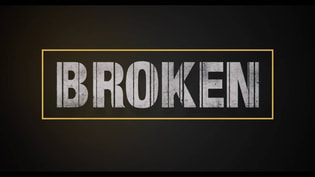
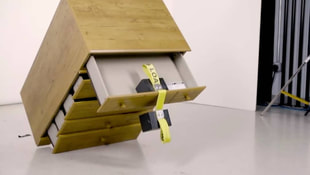
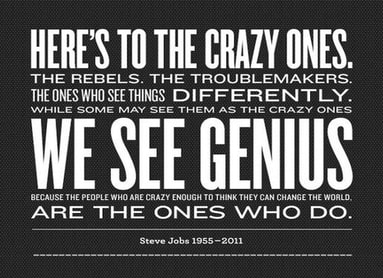
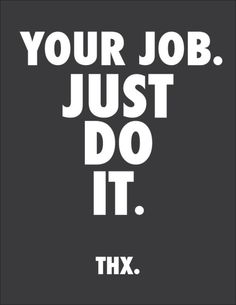
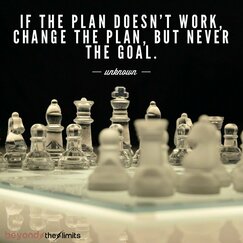
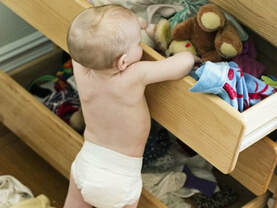
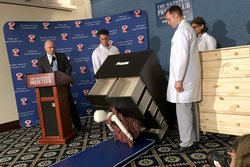

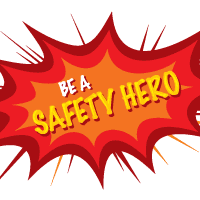

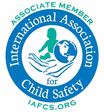
 RSS Feed
RSS Feed